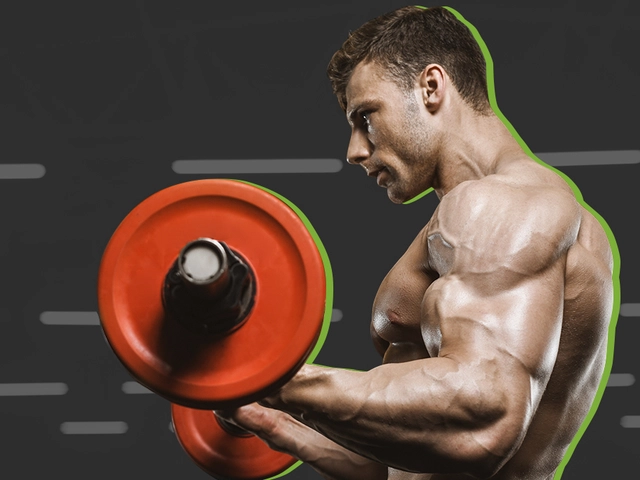
When Mark Sturm, Superintendent of Katmai National Park & Preserve announced the final results on October 6, 2025, the internet collectively cheered for Bear 32 “Chunk,” a 1,200‑plus‑pound brown bear who survived a broken jaw and still bulked up enough to win the year’s biggest wildlife showdown.
What Is Fat Bear Week?
Fat Bear Week began as a quirky “Fat Bear Tuesday” in 2014, a local fundraiser for the Katmai Conservancy Association based in King Salmon, Alaska. By 2015 it had expanded into a full‑week tournament, and today the event is a global phenomenon, drawing votes from every continent via the explore.org platform.
The contest pits adult male and female brown bears against each other in a single‑elimination bracket. Voters watch live webcam feeds of the bears feasting on salmon at Brooks River and cast their picks online. The bear that garners the most votes each round advances, and the final winner is crowned the fattest, most successful bear of the season.
How the 2025 Tournament Unfolded
The 2025 lineup featured eleven contenders, ranging from seasoned veterans to up‑and‑coming youngsters. The bracket was announced on , and voting opened the following Monday.
- Round 1 – Chunk faced Bear 609, a former Fat Bear Junior champion from 2022.
- Semi‑finals – Chunk beat Bear 342 in a close‑call, edging out his rival by just 2 % of the vote.
- Finals – The showdown with Bear 856 was streamed live for 12 hours, and Chunk secured a decisive 57 % majority.
Alongside the main event, a parallel Fat Bear Jr. contest crowned Bear 128 Jr as the youth champion, reinforcing the program’s educational focus.
Meet the Champion: Bear 32 “Chunk”
Chunk, officially catalogued as Bear 32, was first identified by park biologists in 2021. He earned his nickname after a wildlife technician noted his unusually large girth during a summer survey.
What makes Chunk’s victory stand out is his broken jaw, which veterinarians confirmed was sustained in late June 2025 while the bear was tussling over a salmon carcass. The injury forced him to feed less efficiently for weeks, yet he still managed to pack on more than 300 pounds of fat by early September — a testament to the abundant salmon runs that can deliver up to 15 pounds of fish per day for a prime feeder.
According to the Katmai Conservancy, “Chunk is a prime example of resilience. Facing a broken jaw throughout the summer, nobody knew what the season would look like for him, but there is no denying that he defied all expectations.”

Reactions from Park Officials and Conservationists
Superintendent Sturm said in the National Park Service release, “Fat Bear Week enables people from around the world to actively engage in learning about bears while cheering for their favorite competitor.” He added that the contest “helps translate complex ecosystem dynamics into a story anyone can follow.”
Katmai Conservancy Director Lisa Ramos emphasized the educational payoff, noting that classrooms across the United States have incorporated the “Fat Bear Week in the Classroom” curriculum, which aligns with state standards for wildlife biology.
Meanwhile, a spokesperson for Explore Foundation, the nonprofit that runs explore.org, highlighted the surge in voting: “We recorded over 1.2 million votes this year, up 15 % from 2024. The platform’s live cams and real‑time stats keep viewers glued to the drama, turning conservation into a shared experience.”
Why the Contest Matters for Wildlife Education
The event does more than crown a fluffy champion; it shines a spotlight on the intricate food web of Katmai. Salmon are the keystone species, delivering the calories bears need to survive the eight‑month hibernation that follows the October deadline.
Data from the National Park Service show that adult male bears in the Brooks River area typically weigh 700‑900 pounds from late June through September, with some exceptional individuals surpassing the 1,200‑pound mark after an especially bountiful run. Those extra pounds are crucial: research indicates that bears with higher fat reserves experience lower mortality during harsh winters.
By turning this ecological fact into a tournament, the park engages a global audience, raises awareness about salmon habitats, and generates modest fundraising for ongoing research and habitat protection.

Key Facts
- Champion: Bear 32 “Chunk,” ~1,200 lb, survived a broken jaw.
- Event dates: October 1‑6, 2025.
- Venue: Katmai National Park & Preserve, Alaska.
- Votes cast: >1.2 million worldwide.
- Educational reach: Over 300 classrooms used the Fat Bear Week curriculum.
Frequently Asked Questions
How does Fat Bear Week affect bear conservation efforts?
The tournament turns abstract ecological data into a relatable story, driving donations to the Katmai Conservancy and increasing public pressure to protect salmon streams. Since its inception, the event has helped fund $250,000 in habitat restoration projects.
What criteria determine a bear’s eligibility for the competition?
Only bears with active webcam feeds in the Brooks River area qualify. They must be physically healthy enough for observation and have been identified by park biologists. The judges consider weight gain, visible fat deposits, and overall condition.
Who can vote, and how is the voting process secured?
Anyone with internet access can vote on explore.org. The platform uses unique session IDs and CAPTCHA verification to prevent duplicate voting, ensuring a fair contest while encouraging global participation.
Why is salmon so critical to the bears’ winter survival?
Salmon provide high‑fat protein that allows bears to build dense adipose tissue. Studies show that bears with at least 25 % body‑fat have a 30 % higher chance of surviving a late‑season freeze. The seasonal salmon run is therefore a linchpin of the entire Katmai ecosystem.
What’s next for Fat Bear Week after 2025?
Organizers plan to introduce a “Bear Health Index” for future tournaments, incorporating biometric data like heart rate and stress hormone levels. This will give voters a deeper look at bear wellness beyond sheer weight.
More Articles

What program in bodybuilding is best at my age, 47?
At the age of 47, bodybuilding might seem challenging, but it's definitely possible with the right program. It's essential to start with a routine that focuses on strength training and cardiovascular exercises to enhance overall fitness. Incorporating flexibility and balance training is also crucial at this age to prevent injuries. Diet plays a significant role too, so ensure a protein-rich diet for muscle recovery. Remember, it's not about lifting the heaviest weights but about consistent, safe, and effective workouts.

How and where do bodybuilders get steroids?
Bodybuilders often use steroids to increase their muscle mass and strength. Steroids are usually obtained illegally, either from black market sources or through the internet. Alternatively, they can be prescribed by a doctor for medical reasons, although this is not common. Bodybuilders may also resort to using alternative or legal steroids, such as prohormones, which may not be as effective as anabolic steroids. It is important to note that the use of steroids is highly risky and can have serious health and legal consequences.

How well can boxing and bodybuilding combine?
Boxing and bodybuilding can complement each other quite well, offering a blend of strength, endurance, and agility training. By incorporating boxing into a bodybuilding regimen, one can enhance cardiovascular fitness and improve overall body conditioning. However, it's worth noting that excessive bodybuilding can potentially hinder boxing performance due to reduced flexibility and speed. In essence, a well-balanced approach combining both disciplines can lead to better physical fitness and athletic performance. It's all about understanding how to integrate these activities effectively into your routine.
